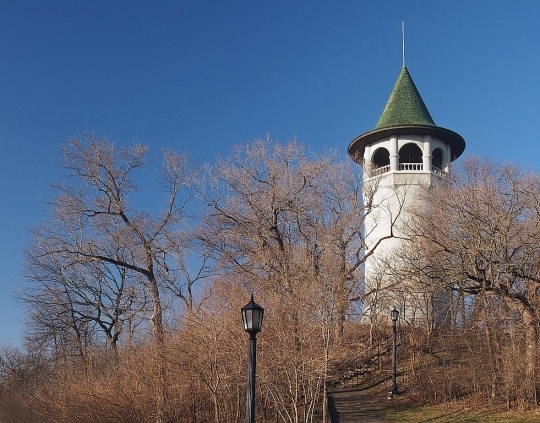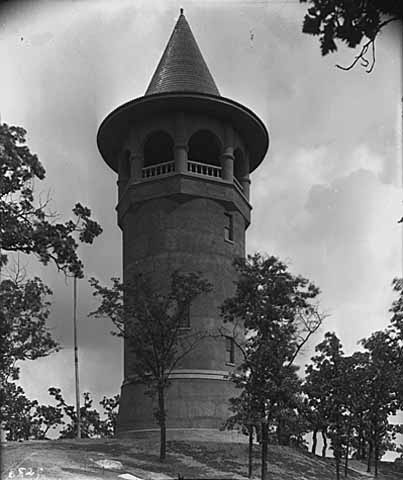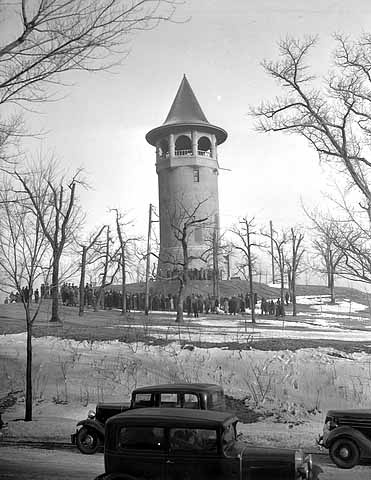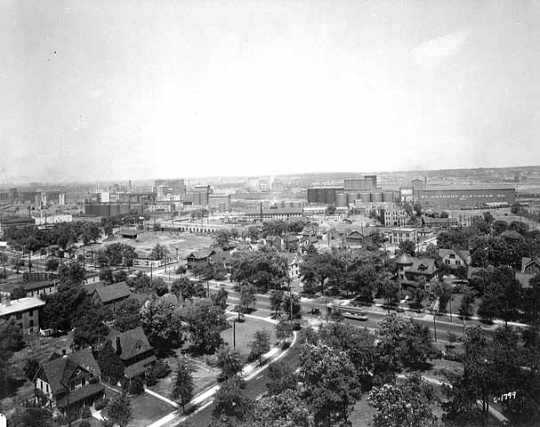Useful structures do not always have to look utilitarian. Case in point: the Prospect Park Water Tower. Familiarly known as "The Witch's Hat," it has become the neighborhood's architectural mascot not for its function but for its singularity. More than once over the years it has also galvanized neighborhood pride and determination on its own behalf.
Erected in 1913 on Tower Hill, one of the highest elevations in Minneapolis, the tower was built to increase water pressure in the area and thereby enhance firefighting efforts. The functional structure, however, was given a whimsical appearance by city engineer Frederick William Cappelen. To the delight of generations of Minnesotans to come, he topped the building with a fanciful brimmed "hat" of green ceramic tile, and hence its nickname was born.
The Witch's Hat and the Prospect Park neighborhood have enjoyed a love affair of sorts over the years. From the beginning, the tower and surrounding parkland attracted neighbors, young and old, who picnicked under shade trees in summer and sledded down the hill's icy slopes in winter. The tower's observation deck provided spectacular views of the Minneapolis and St. Paul skylines, and the building itself inspired many artists who captured its one-of-a-kind profile in charcoal and watercolor.
The Witch's Hat ceased to function as a water tower in 1952, but it remained an esteemed neighborhood symbol, worthy of defense. In 1955 when the city announced plans to demolish the tower following a lightning strike, the community mobilized. "Spurred on by eleven members of the Prospect Park Blue Birds (a junior organization of the Campfire Girls)," neighbors fought city hall and saved their tower.
Since the late twentieth century, the observation deck is open only one day a year, which is celebrated with an ice-cream social. The rest of the time, The Witch's Hat quietly communes with the dog walkers, strolling lovers, and frolicking children who come to visit, just like any other resident of the neighborhood.









